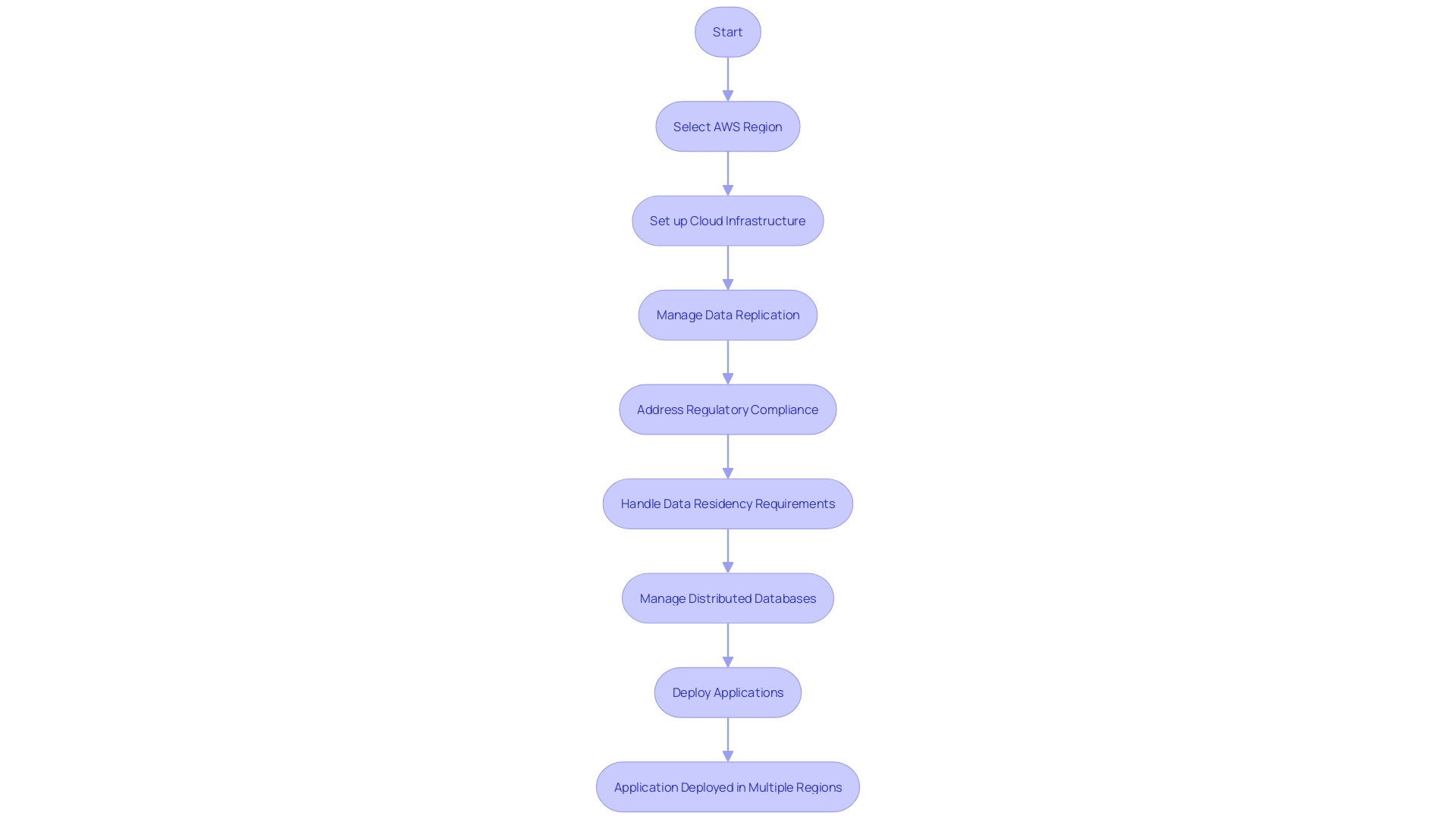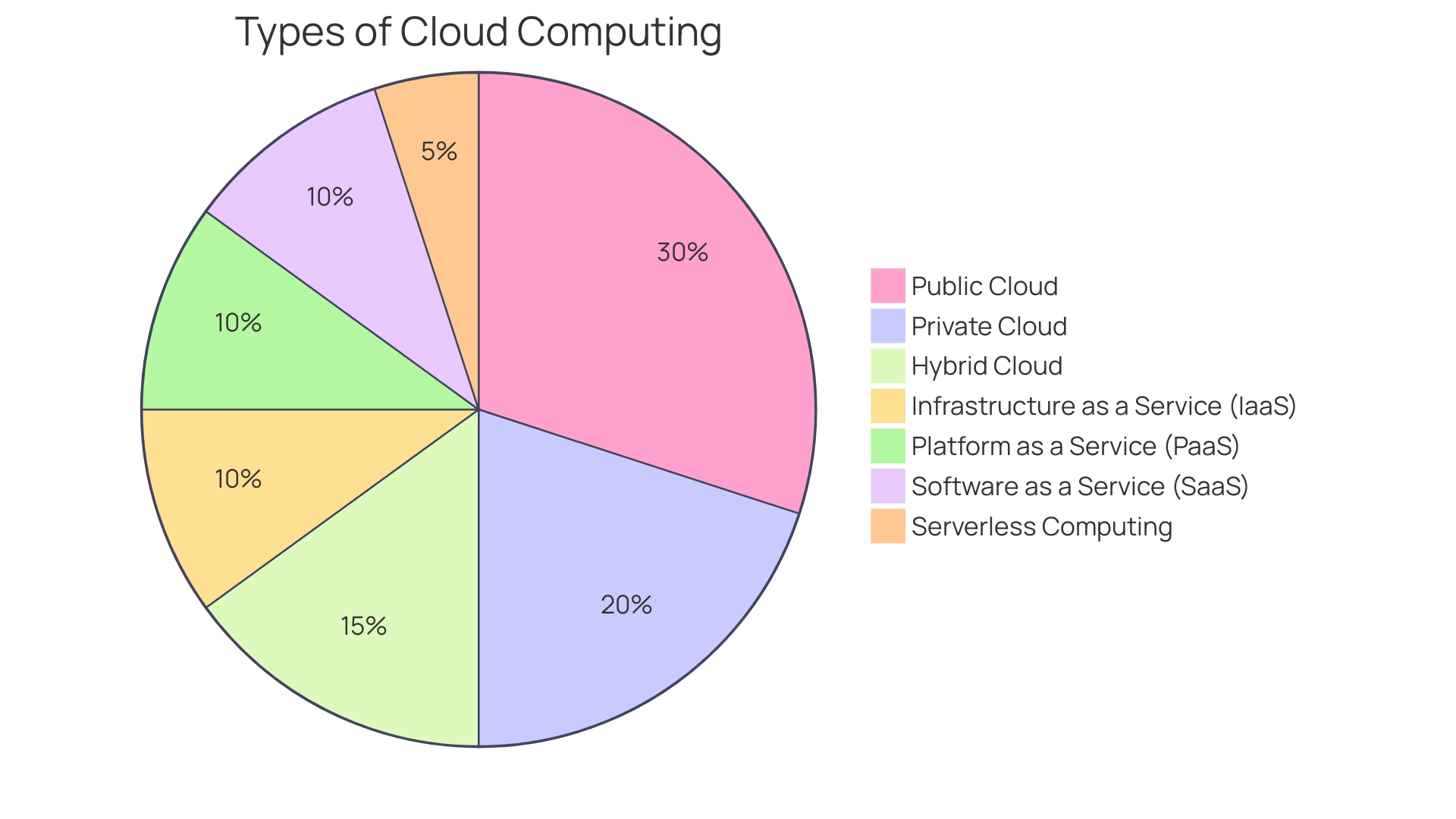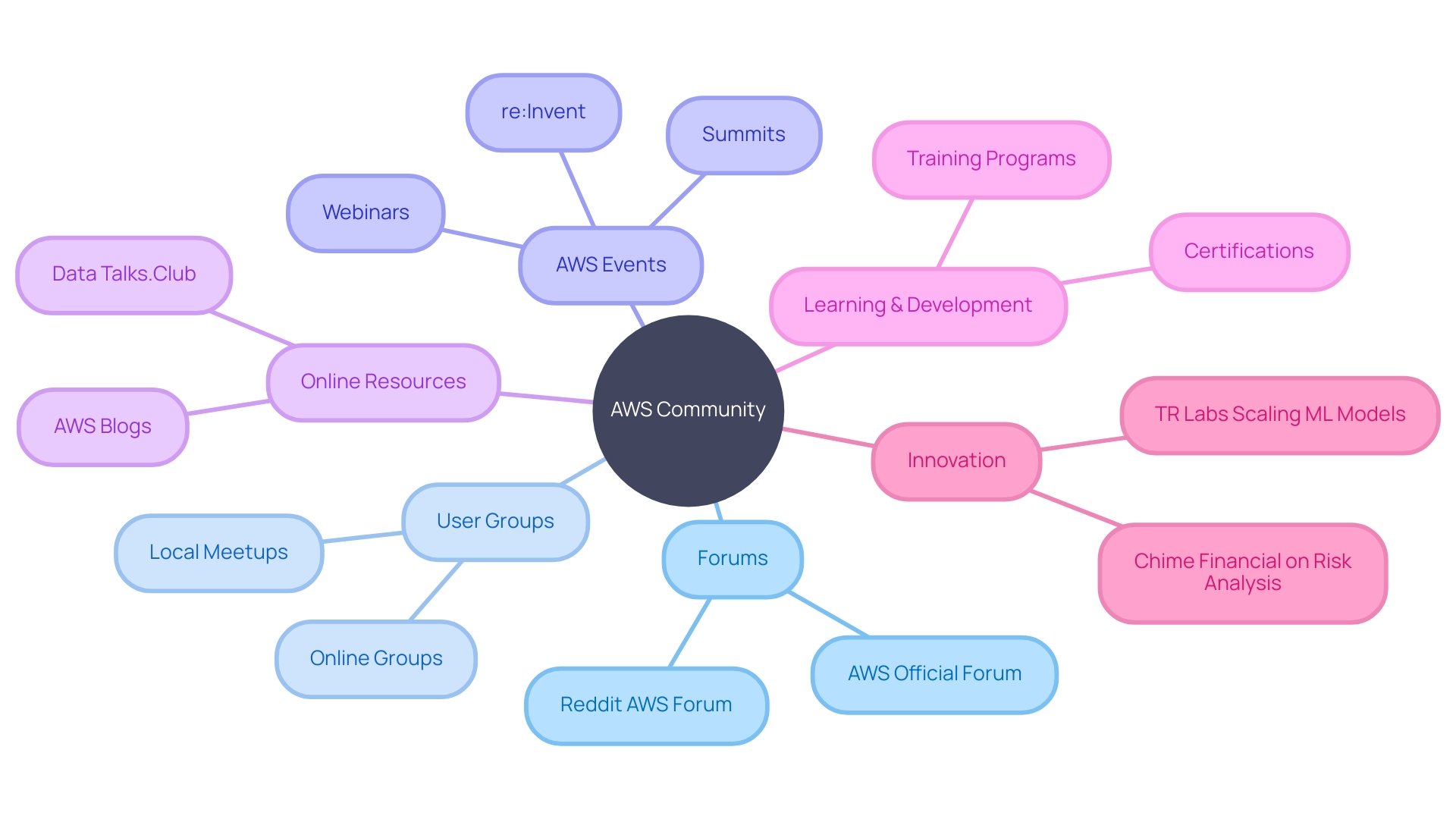Introduction
Cloud computing has revolutionized businesses across various industries, streamlining operations and boosting efficiency. The scalability and flexibility of cloud services have made them indispensable in managing dynamic workloads and supporting advanced technologies like IoT and AI. As the adoption of cloud technology continues to rise, Amazon Web Services (AWS) stands at the forefront, offering robust and flexible infrastructure solutions.
With its global reach, high availability, cost savings, and emphasis on security and compliance, AWS has become a trusted and reliable platform for businesses of all sizes. In this article, we will explore the key benefits of cloud-based AWS, delve into its scalability and flexibility, cost savings and pay-as-you-go pricing, high availability and reliability, security and compliance, global reach and infrastructure, innovation and continuous improvement, and the ecosystem and community support that AWS provides. Whether you're just starting with AWS or looking to enhance your existing cloud infrastructure, this article will guide you through the journey of leveraging AWS's comprehensive cloud computing solutions.
What is Cloud Computing?
Leveraging cloud computing has transformed the operational capabilities of numerous businesses, streamlining processes and enhancing efficiency. For instance, Vodafone's shift to cloud architecture enabled customers to access services anytime from home while reducing the engineering team’s workload during product launches. Previously, a product launch required a 20-person team working around the clock; post-migration, this task is handled by just five individuals.
Cloud computing's scalability and flexibility extend to various industries. IT firms utilize the cloud for managing dynamic workloads and supporting CI/CD pipelines, ensuring resource availability. This is exemplified by Svitla Systems' business solutions, which assist companies in optimizing their cloud-based operations.
Cloud services are not limited to IT; they also revolutionize the retail sector by managing fluctuating online traffic. Cloud adoption is on the rise; infrastructure investment in cloud systems accounts for a significant portion of IT spending. This trend suggests an increasing shift away from traditional in-house IT towards external infrastructure.
The drive for cloud services is fueled by rapid digital transformation, the growing prevalence of internet and smart devices, and the integration of big data. The adoption of IoT, 5G, ML, and AI further accelerates the use of cloud technology, enabling businesses to operate more effectively and adapt quickly to market changes. With industry leaders like NVIDIA expanding their offerings to include software and data-center design services, the cloud computing market is poised for continued growth.
NVIDIA's CEO, Jensen Huang, emphasizes the company's unique ability to design AI factories due to their comprehensive technology stack. The cloud market is expected to grow at an annual rate of 17% through 2025, driven by advances in AI. This growth is not only attributed to technological advancements but also to strategic partnerships, as illustrated by IFCO's collaboration with Rackspace Technology, which provided expertise and customer-focused solutions.
The market's growth potential is further underscored by Arm's expectation of expanding its 10% market share, leveraging its dominance in the automotive sector and exploring new opportunities in the PC market. The cloud's value extends to IT productivity, business innovation, and the application of advanced technologies, including generative AI. As businesses seek to maximize their cloud ROI, they must balance investments with the anticipated benefits, navigating the complexities of cloud migration and adoption.
Key Benefits of Cloud-Based AWS
Amazon Web Services (AWS) stands at the forefront of cloud computing, offering robust and flexible infrastructure solutions that cater to the dynamic needs of businesses and individuals alike. The transformative power of AWS becomes evident through several real-world applications that span various industries.
For instance, Vodafone was able to enhance customer accessibility by shifting to cloud architecture, enabling customers to manage their services from home, which dramatically streamlined operations. Engineers now leverage better tools and a more efficient work environment. This operational efficiency is illustrated by the fact that what once required a 20-person team working around the clock can now be accomplished by just five individuals.
In the realm of pharmaceuticals, Vertex Pharmaceuticals has co-authored with AWS experts to revolutionize drug discovery. By integrating machine learning techniques, such as image segmentation, into their research process, scientists can now analyze experimental data more effectively, significantly accelerating the discovery of therapeutic drugs.
A testament to the scalability and reliability of AWS is Chess.com, which hosts over ten million chess games daily for its community of over 150 million users. AWS has enabled Chess.com to foster the game's growth and connect players across the globe, maintaining a stable IT infrastructure to ensure seamless user experiences.
The growing reliance on AWS is further underscored by the latest advancements, such as Amazon S3 Express One Zone for high-frequency data access and the continued evolution of Graviton processors, which highlight AWS’s commitment to performance and innovation.
As industries continue to embrace digital transformation, the adoption of cloud services is on the rise, driven by the need for efficient, rapid adaptation to changing market environments. Cloud computing's importance is magnified by its role in enabling advanced technologies like IoT and AI, as noted by the World Economic Forum. The market's trajectory is further supported by the increasing preference for service models like IaaS, SaaS, and PaaS, especially among SMEs.
This shift towards cloud infrastructure is not only a strategic move for operational agility but also a competitive advantage in the ever-evolving technological landscape.
Scalability and Flexibility
Amazon Web Services (AWS) empowers organizations to adapt to changing market demands with its scalable cloud computing solutions. By leveraging AWS, companies can dynamically adjust their resource allocation, aligning with real-time requirements and paying only for what they consume. This scalability is a cornerstone of cloud computing, which has supported the rapid growth of platforms like Instagram, which ballooned to 14 million users within a year with just a three-engineer team, and Chess.com, which caters to over ten million daily games for a community exceeding 150 million users.
The AWS ecosystem is designed to support high availability even in the face of inevitable failures, exemplified by its commitment to maintaining operational continuity across one million servers with a 99.99% availability rate. This resilience is further reinforced through structured approaches like the seven layers of improvement opportunities utilized by GoDaddy, which help streamline processes and maintain efficiency amid growth.
With AWS, businesses can sidestep common scaling pitfalls such as overprovisioning during hypergrowth or succumbing to complexity in their infrastructure. This enables a focus on delivering quality products and services without the distraction of managing a sprawling web of resources. As organizations worldwide, from startups to large enterprises, embrace cloud computing, AWS stands out as a platform that not only offers affordability and flexibility but also a robust architecture for building modern, elastic workloads.
Cost Savings and Pay-as-you-go Pricing
Amazon Web Services (AWS) revolutionizes the economic landscape for organizations by offering a pay-as-you-go pricing model that allows businesses to pay exclusively for the resources and services utilized. This model offers a stark contrast to traditional capital expenditure on hardware and infrastructure, paving the way for significant cost savings and the elimination of substantial upfront investments. By embracing this model, AWS empowers businesses to intricately align their spending with their growth and usage patterns, ensuring that they can scale their operations efficiently and responsively to demand.
Furthermore, AWS's pricing strategy aligns seamlessly with the Cost Optimization pillar of the Well-Architected Framework, promoting continuous refinement throughout a workload's lifecycle, thereby enhancing business outcomes while optimizing costs. Organizations can leverage this pricing option to modernize their workloads, utilizing cutting-edge hardware and services that foster scalability and elasticity, all while maintaining a keen focus on financial prudence and operational efficiency.
High Availability and Reliability
Amazon Web Services (AWS) is engineered to deliver highly available and resilient infrastructure, which is crucial for businesses to maintain uninterrupted operations. AWS's architecture incorporates redundancy and automatic failover protocols to ensure application and data availability, even amidst infrastructure disruptions. For instance, AWS's Elastic Container Service (ECS) is designed with these principles in mind, utilizing constructs like high availability to simplify the management of containerized applications.
At the heart of AWS's robustness is the understanding that no system is immune to failure. With this philosophy, AWS has achieved an impressive 99.99% availability for its services, meaning that even with one million servers, only around one hundred might be experiencing issues at any given time. This level of reliability is further exemplified by the durability ratings of AWS services, such as Elastic Block Store (EBS) with 99.9% or 99.999% depending on the volume type, and Simple Storage Service (S3) with an extraordinary 11 nines (99.999999999%) durability.
AWS's emphasis on availability and resilience is not just theoretical but has practical implications for businesses. For example, a website's availability could be gauged by its capability to process transactions seamlessly at any time. AWS's infrastructure is built to minimize any negative impact on such availability metrics.
Resilience, a slightly different concept, is also at the forefront of AWS's design strategy. It is the ability to rapidly restore services following a failure, which is critical for maintaining customer trust and business continuity.
AWS's continual innovation in cloud services is evident with the introduction of products like Amazon S3 Express One Zone, which promises enhanced performance for frequently accessed data, supporting millions of requests per minute. Moreover, the evolution of AWS's computing power with the Graviton series showcases its commitment to advancing technology while providing businesses the flexibility and scalability they need.
In summary, AWS's approach to cloud computing is defined by a commitment to high availability and resilience, enabling businesses to focus on differentiating their applications and achieving their goals without being hindered by technological setbacks.
Security and Compliance
Amazon Web Services (AWS) sets the benchmark for cloud-based infrastructure, offering robust security measures to safeguard data and applications. Employing an array of advanced security features, AWS ensures that users can maintain a secure cloud environment. This encompasses encryption methodologies to secure data at rest, such as server-side encryption where AWS services like Amazon S3 manage both encryption and decryption processes.
Additionally, AWS emphasizes the importance of identity and access management, granting precise control over who can access specific resources and how they can interact with them.
Moreover, Chime Financial's experience underscores the significance of network security within AWS. When Chime encountered a suspicious AWS support case, it highlighted the potential for misuse of services like the Simple Email Service (SES) by attackers. This real-world example illustrates the critical need for vigilant monitoring and stringent security protocols to prevent unauthorized transactions and ensure regulatory compliance.
AWS's commitment to security is further exemplified by the Intelligent Document Processing (IDP) Well-Architected Custom Lens, which aids in navigating security challenges. This framework guides users through key areas such as access control, data protection, and key and secret management, solidifying AWS's role as a leader in cloud security. With AWS, businesses can confidently drive innovation and foster economic growth, backed by the assurance of a secure and resilient cloud infrastructure.
Global Reach and Infrastructure
Amazon Web Services (AWS) provides a robust global infrastructure that allows you to deploy applications and services across multiple regions worldwide, ensuring you can deliver low-latency experiences to a broad audience. This multi-region capability is particularly valuable for companies seeking to navigate the complex landscape of data sovereignty and regional compliance requirements. For example, German and European businesses, especially the 'Mittelstand' of small and medium-sized enterprises, are increasingly in need of digital infrastructure that adheres to local data protection laws to remain competitive in the global market.
Understanding the basics of cloud regions is crucial. Each region represents a separate geographic area where AWS operates data centers. When you select a region for your cloud infrastructure, you are choosing the physical location of your data and services—each region operates independently, with no automatic data replication across regions.
The significance of this setup becomes evident when considering the legal mandates of different countries concerning the handling, processing, storing, and protection of customer data. With the emergence of AWS's independent European cloud, organizations now have more options to satisfy stringent regulatory requirements and implement digital sovereignty strategies effectively.
Choosing whether to build in-house solutions or buy services is another critical decision for organizations. While mature development teams might consider building their solutions, the cloud offers scalable, elastic workloads and up-to-date hardware with pay-as-you-go pricing, making purchased services an attractive option for many. Nevertheless, for organizations with legacy applications or specific regulatory requirements, on-premise solutions might be preferable.
Deploying applications across multiple regions is not without its challenges, with the database often being the most complex component to manage. Consistency across distributed databases is essential for multi-region deployments. With proper planning and the right tools, however, many of these challenges can be mitigated, enabling organizations to take full advantage of AWS's global infrastructure for their expansion and growth.

Innovation and Continuous Improvement
Harnessing the power of Amazon Web Services (AWS) opens up a world of possibilities for organizations to propel themselves ahead in the ever-evolving tech landscape. AWS is not just a static platform; it's a dynamic ecosystem that continuously expands with new services and features, giving businesses the agility to experiment and innovate at a faster pace. Take, for example, the case of ICL, a global manufacturing and mining corporation, which faced the daunting task of monitoring harsh mining environments.
The traditional manual monitoring methods proved inefficient and costly. By integrating AWS's cloud computing solutions, ICL could potentially transform their operations, allowing for more scalable and cost-effective remote monitoring.
The innovation doesn't stop there. AWS is the backbone for companies like GoDaddy, which services over 20 million customers and relies heavily on data analytics to drive business decisions. With AWS, GoDaddy has embarked on optimizing its batch processing jobs, illustrating AWS's role in supporting high-volume data management and processing efficiency.
AWS re:Invent 2023 further showcases the breadth of AWS's capabilities, from providing platforms for generative AI to facilitating advances in neonatal neurotechnology and environmental monitoring through AI and machine learning. It's evident that AWS is a catalyst for innovation across diverse sectors. The digital twin technology, as quoted by industry experts, exemplifies how AWS can overcome data silos and create interconnected systems that deliver insights throughout the lifecycle of a project, from design to decommissioning.
As the demand for cloud services skyrockets, driven by rapid digital transformation and the integration of technologies like IoT and AI, AWS's offerings are becoming more critical than ever. Industries are recognizing the efficiency and speed at which cloud computing allows them to adapt to market changes. With the fourth industrial revolution upon us, the adoption of advanced technologies necessitates a robust cloud infrastructure like AWS, which is pivotal for running these sophisticated applications.
The surge in cloud services adoption is not limited to large enterprises. Small and Medium Enterprises (SMEs) are also turning towards cloud solutions like SaaS, PaaS, and IaaS, highlighting the versatility and accessibility of AWS's offerings. It's clear that AWS is at the heart of this technological revolution, delivering solutions that cater to the dynamic needs of businesses across various verticals, from retail to manufacturing, and driving the market growth into the future.

Ecosystem and Community Support
Amazon Web Services (AWS) is not just a provider of cloud computing resources; it's a comprehensive platform bolstered by a vibrant ecosystem of partners, developers, and users. This ecosystem is a treasure trove of support, offering resources and opportunities for collaboration that are vital in enhancing the value of AWS implementations. Case in point, TR Labs' journey illustrates how leveraging AWS enabled their team to handle the growing complexity of machine learning (ML) projects as they scaled.
Starting with a small team focused on ML innovation in areas like text summarization and document categorization, they saw their team expand to over 100 members. AWS provided the necessary infrastructure to manage their increasing model development and training complexities.
A similar story unfolded at ICL, a multinational manufacturing and mining corporation, where monitoring industrial equipment under harsh conditions was a herculean task. AWS enabled a shift from manual, labor-intensive monitoring to sophisticated, cloud-based solutions, significantly reducing downtime and environmental risks while optimizing operational costs. News of innovative applications of AWS's capabilities further emphasizes its impact, such as the use of artificial intelligence to rapidly identify newborns at risk of brain injury and machine learning tools to combat sexual abuse against children, analyzing millions of digital files at unprecedented speeds.
The DevOps philosophy, which emphasizes collaborative problem-solving and automation to reduce friction, aligns perfectly with the AWS approach, enabling streamlined deployments and better product delivery. As highlighted by the growth in the tech sector and the rise in the number of professional developers—reaching approximately 13.4 million by 2023—AWS's ecosystem continues to flourish, providing the support and infrastructure necessary for businesses to innovate and grow in today's digital landscape.
Use Cases Across Industries
Amazon Web Services (AWS) has become an integral part of the digital backbone that powers a wide variety of sectors. From FinTech innovations at companies like Chime Financial, which leverage AWS to offer secure, member-first financial products, to advancements in agricultural health monitoring, AWS's cloud computing capabilities are proving indispensable. Chime Financial uses AWS to safeguard its members' transactions and drive industry innovation, highlighting the security and reliability of AWS's infrastructure.
In agriculture, AWS is instrumental in analyzing external indicators of dairy cows' health, revealing the platform's versatility in addressing the unique needs of different industries. AWS's cloud services enable businesses to rent online storage and computing power, scaling operations flexibly and cost-effectively, as noted by the collaboration between AWS and the BMW Group. This partnership aims to advance automated driving technology, showcasing the role of AWS in supporting the automotive sector's shift toward automation.
Furthermore, AWS's role in the industrial manufacturing sector illustrates its ability to overcome challenges such as standardizing operational technology systems and breaking down data barriers. Companies in the manufacturing and automotive industries utilize AWS to maintain geographic 'shops' with diverse equipment and performance metrics, resulting in improved agility and cost-effectiveness.
The significance of AWS in today's corporate landscape is underscored by its ability to facilitate the development and deployment of a vast array of applications. From simple web hosting to complex machine learning models, AWS's ecosystem fosters innovation and knowledge sharing among partners, developers, and users worldwide.
Statistics reflect the transformative impact of cloud computing, with companies achieving enhanced efficiency and reduced capital costs by adopting AWS's services. The healthcare industry, for instance, benefits from economical alternatives to extensive IT infrastructure, while the future of cloud computing promises to revolutionize business operations on a global scale. AWS's services, which span data storage, servers, databases, networking, and software, are central to this transformation, driving IT productivity, business innovation, and the adoption of advanced technologies such as generative AI.

Getting Started with AWS
Embarking on the journey of Amazon Web Services (AWS) begins with a simple step: setting up an AWS free tier account. This account provides a variety of services that you can use without cost, which is ideal for exploring and learning the AWS environment. Start by searching for the "AWS free tier account" and navigate to the free tier page to understand the services at your disposal.
Once there, initiate the account creation process by clicking on "Create a Free Account" and fill out the registration form with your email and a unique AWS account name. You'll receive a verification code in your email to confirm your identity. With verification complete, you'll set a strong password that meets AWS's security criteria and provide your contact details.
Decide whether the account is for business or personal use and enter your full name, phone number, and address. Accept the AWS terms to proceed.
As a new AWS user, remember that your root user account, which has full administrative access, is assigned by default. This allows you to grant permissions and manage access as needed. As you familiarize yourself with AWS, explore the extensive range of over 300 services offered, including computing, storage, databases, and analytics.
AWS's scalable, on-demand infrastructure is designed to support everything from virtual machines and serverless computing to big data processing and machine learning, all accessible via the internet.
AWS's impact is evident in its market presence and rapid growth, with recent statistics highlighting Amazon's dominance in the e-commerce sector. As of the second quarter of 2023, Amazon's revenue reached $134.4 billion. This growth and the widespread reliance on AWS services underscore the importance of understanding how to effectively scale on AWS.
Whether it's infrastructure design or application architecture, AWS provides the tools necessary to grow your applications in a cost-effective manner.
Moreover, AWS's commitment to innovation is showcased through events like re:Invent, where attendees can engage with sports simulations powered by AWS or learn about advancements such as generative AI. AWS's continual evolution offers businesses and individuals the opportunity to build and scale their applications efficiently, keeping pace with technological advancements and market demands.

Step 1: Create an AWS Account
To embark on your cloud journey with Amazon Web Services (AWS), setting up a new account is the first step. This involves creating a unique identity within the AWS ecosystem. As per the Cloud Security Alliance Guidance, an identity is a unique expression of an entity within a namespace.
For AWS, your email becomes a crucial identifier, serving as your 'username' within the AWS namespace. It's essential to have a distinct email for your root account, which acts as the master user with comprehensive access to all AWS services and resources.
AWS is renowned for its extensive suite of over 300 cloud services which cater to a myriad of computing needs, from basic infrastructure services like storage and databases to advanced analytics. As a leader in cloud computing, AWS allows businesses of all sizes to rent online storage and computing power on-demand, providing the flexibility to scale operations in sync with their growth trajectory.
Recent developments have also seen AWS commit to creating an independent European cloud, demonstrating their dedication to meeting stringent regulations and supporting digital sovereignty. This initiative is particularly significant for the German 'Mittelstand'—the small and medium-sized enterprises that form the backbone of the economy—underlining the importance of local computing power and digital infrastructure to remain globally competitive.
Canalys, a leading independent analyst firm, has highlighted the critical role of AWS in the technology industry, showcasing its innovative technology solutions and excellent customer service. As businesses and IT professionals around the world look to AWS for reliable cloud services, AWS continues to shape the future of cloud computing with its customer-centric approach and commitment to innovation.

Step 2: Familiarize Yourself with AWS Services
Amazon Web Services (AWS) provides an extensive array of cloud computing solutions, each designed to cater to specific organizational needs. Customers like the UK's Dunelm Group plc utilize AWS to support their digital platforms, which are vital for revenue generation, especially as the company expands. Similarly, Vertex Pharmaceuticals employs AWS to enhance drug discovery through machine learning, analyzing vast datasets with greater speed and accuracy.
AWS's services are not just for large-scale enterprises such as BMW Group, which harnesses data-driven decision-making to innovate in automotive production and mobility services. Small and medium-sized businesses can also benefit from AWS, as evidenced by the recent announcement of an independent European cloud, addressing the needs for local computing power and digital sovereignty, as highlighted by German Federal Ministry for Digital and Transport's state secretary, Stefan Schnorr.
Organizations can improve content accuracy and privacy through services like Amazon Transcribe, which offers language customization, and Amazon Translate for multi-language support. Moreover, Amazon Simple Queue Service (Amazon SQS) and Amazon Simple Notification Service (Amazon SNS) enable reliable message queuing and publishing, ensuring seamless communication between software components.
The comprehensive nature of AWS, likened to the diverse animal kingdom of Australia, offers over 200 fully featured services from data centers globally. This vast selection allows for tailored solutions, whether for creating and translating subtitles to reach a wider audience or leveraging serverless architectures that dispense with the need to manage servers.
As AWS continues to evolve, it adapts to market demands, providing not only the building blocks but also packaged software tools for specific business needs. As noted by AWS Applications group leaders, this is a response to the scarcity of skilled workers and the increasing need for support in areas like call centers and customer data management.
The importance of actively using AWS services to truly understand their capabilities cannot be overstated. Real-world use cases, such as those tackled by DevOps teams, demonstrate the practical applications and current trends in technology, with DevOps emerging as a particularly notable topic.
By exploring and utilizing the breadth of services offered by AWS, organizations can address their unique challenges, drive innovation, and maintain competitiveness in the digital marketplace.
Step 3: Learn AWS Best Practices
To leverage Amazon Web Services (AWS) effectively, it's essential to familiarize oneself with the plethora of educational materials AWS offers, like documentation, whitepapers, and online training resources. These materials encapsulate best practices that are not only industry-recognized but also reflective of AWS's evolving definitions of what constitutes a well-architected system. For example, the Well-Architected Framework guides technology practitioners through critical focus areas such as cost optimization, a process of continual refinement throughout a workload's lifecycle.
AWS's commitment to cost-aware solutions is demonstrated in case studies like that of the UK's Dunelm Group plc, where insights into efficient software architecture were pivotal for scaling the company's significant digital revenue.
In the journey towards optimization, GoDaddy has identified seven layers of improvement opportunities, showcasing a structured approach to enhancing efficiency. And as AWS continues to grow, as reflected in the news, its flexibility and affordability have made it indispensable for businesses looking to scale with ease, offering a suite of services that cater to varying organizational needs.
The cloud's transformative impact on businesses is evident in the partnership between AWS and BMW Group, where AWS's infrastructure is pivotal in advancing automated driving functions. This is just one example of how AWS's offerings enable companies to focus on innovation rather than infrastructure.
AWS also collaborates with select AWS Partner Network (APN) Partners to provide a repository of code and hands-on experience, ensuring that organizations can implement these best practices effectively. Whether it's considering the balance between buying and building services or navigating complex business requirements such as service availability and data sovereignty, AWS's resources are designed to facilitate informed architectural decisions that drive business outcomes.
By delving into AWS's educational resources, organizations can tap into advanced technologies like generative AI, which is revolutionizing the way we interact with data. Generative Ai's potential to translate natural language into SQL queries exemplifies the innovative solutions AWS enables, making it easier for both technical and non-technical users to harness the power of enterprise data warehouses. This is particularly relevant given the ubiquity of SQL and the challenges associated with querying complex relational databases.
As businesses continue to navigate the digital landscape, AWS's comprehensive learning resources are invaluable for achieving technological and business excellence.
Step 4: Start with Simple Projects
Embarking on the AWS journey effectively requires starting with modest projects, as these provide the foundation for skill growth and knowledge expansion. For example, ICL, a multinational manufacturing and mining corporation, tackled the challenge of monitoring industrial equipment under harsh conditions by gradually integrating technology solutions. They initially relied on manual monitoring, but understood the scalability limitations and high costs associated with it.
Similarly, TR Labs began as a small team focused on machine learning innovation. They started with simple projects, which led to significant advancements in AI/ML models, eventually requiring them to manage more complex model development as the team expanded.
The OpenSearch project's mentorship program highlights the importance of learning in stages. New developers begin by contributing to open source software, gaining experience that can jumpstart their tech careers. This underscores the value of starting small and leveraging opportunities for growth.
AWS, as the market leader, offers a breadth of services and robust documentation, facilitating a step-by-step learning process for beginners and experienced users alike. For instance, deploying an application like OWASP Juice Shop on AWS touches on key aspects of application deployment and security, providing invaluable, hands-on experience. As one moves through the AWS learning journey, starting from creating a simple hello world app to setting up a new VPC, the gradual increase in complexity builds a solid foundation for future challenges.
Abstraction, as Leslie Lamport emphasizes, is crucial in managing complexity by focusing on the essential elements of a system. This approach is particularly useful when navigating the cloud's vast array of services and technologies. As a cloud enthusiast with a few months of AWS experience, I can attest to the overwhelming nature of the platform's offerings.
It's essential to tackle this information overload by starting with small, manageable projects and incrementally adding complexity, which aligns with AWS's comprehensive and user-friendly ecosystem.
Therefore, as we begin our AWS journey, it's important to remember the words of an industry professional who, after seven years in tech and focusing on cloud computing since 2020, assures us that mastering cloud computing is achievable. If one can navigate the complexities of raising children, as the professional relates, the learning cloud computing is within reach. This serves as an inspiring reminder that starting with small projects on AWS is a strategic approach to building a solid foundation in cloud computing and staying relevant in the industry.

Step 5: Join the AWS Community
Leveraging the collaborative ethos of the AWS community can be transformative for both learning and innovation. Participating in forums and user groups offers a chance to tap into a collective knowledge base, where one can gain insights and perspectives from a diverse range of professionals, including those from companies like Chime Financial, which relies on AWS for their financial technology services. For instance, Chime's Risk Analysis team employs AWS to monitor data patterns and safeguard against fraudulent transactions, showcasing the practical applications of AWS tools in real-world scenarios.
Moreover, AWS events present opportunities to explore cutting-edge advancements. For example, at AWS re: Invent, attendees can immerse themselves in innovation talks, interactive sports challenges, and hands-on experiences with AWS partners' offerings. These gatherings are not just about showcasing new technologies but are also platforms for networking and learning about scaling infrastructure and application architecture from experts.
Staying engaged with the AWS community can lead to the discovery of resources like Data Talks.Club, a space for data enthusiasts to discuss topics ranging from data analytics to machine learning, and Reddit forums, where data science professionals exchange insights. Such communities are instrumental in addressing career-related queries and contributing to one's professional development. By actively participating in these communal spaces, one can stay abreast of the latest AWS developments and apply shared knowledge to overcome complex challenges, like those experienced by the TR Labs team during their expansion and scaling of ML models.

Conclusion
In conclusion, Amazon Web Services (AWS) stands as a trusted and reliable platform for businesses of all sizes, offering robust and flexible infrastructure solutions. The scalability and flexibility of AWS enable organizations to adapt to changing market demands and dynamically adjust resource allocation. This ensures efficient operations and cost savings, as businesses only pay for what they consume.
AWS's high availability and reliability, with a 99.99% availability rate and durable services, provide businesses with the confidence to maintain uninterrupted operations and customer trust. The emphasis on security and compliance, with advanced encryption and access management, safeguards data and applications in the cloud.
AWS's global reach and infrastructure allow organizations to deploy applications and services across multiple regions, ensuring low-latency experiences for a broad audience. This is particularly valuable for companies navigating data sovereignty and regional compliance requirements. AWS's commitment to innovation and continuous improvement, evidenced by the introduction of new services and features, enables organizations to experiment and innovate at a faster pace.
The vibrant ecosystem and community support of AWS provide resources and opportunities for collaboration, enhancing the value of AWS implementations and fostering knowledge sharing.
Overall, AWS's comprehensive cloud computing solutions, coupled with its commitment to expertise and reliability, make it a trusted authority in the field. By leveraging AWS, businesses can streamline operations, enhance efficiency, and drive innovation, all while maintaining a secure and resilient cloud infrastructure. Whether just starting with AWS or looking to enhance existing cloud infrastructure, organizations can rely on AWS's comprehensive solutions to meet their dynamic needs and navigate the ever-evolving technological landscape.




